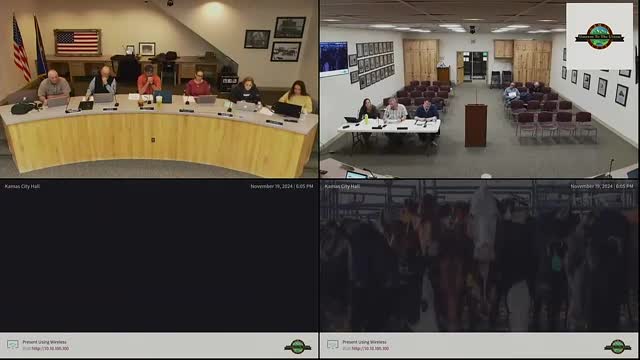Communities scramble to meet new subdivision code deadlines
November 19, 2024 | Kamas Planning Commission, Kamas, Summit County, Utah
This article was created by AI summarizing key points discussed. AI makes mistakes, so for full details and context, please refer to the video of the full meeting. Please report any errors so we can fix them. Report an error »

In a recent government meeting, officials discussed critical revisions to local codes in response to new state legislation affecting subdivision processes. With a deadline of December 31st looming for communities with populations under 5,000, the urgency of these changes was emphasized, particularly as many municipalities, including Gammis, were unaware of the funding and requirements that had emerged.
The revisions primarily address conflicts between existing local codes and two significant pieces of state legislation: Senate Bill 174 and House Bill 476. These laws introduce a new subdivision review process that all Utah communities must adopt, with many facing compliance deadlines as early as February 1, 2024. The meeting highlighted that the new regulations focus on residential subdivisions, specifically single-family, two-family, and townhome developments, while maintaining the council's authority over zoning and policy decisions.
Key changes include the establishment of administrative land use authority for subdivision applications, which allows developers to submit applications without needing prior council approval, provided they meet all established criteria. This procedural shift aims to streamline the approval process, enabling quicker responses to developers while ensuring that any substantive changes still require legislative review.
The meeting also addressed the introduction of mandatory public availability of application checklists and guidelines, allowing applicants to navigate the process independently. This transparency is intended to facilitate smoother interactions between developers and city officials.
Additionally, the council discussed the implications of pre-application meetings, which are now optional rather than mandatory. While these meetings are encouraged to foster communication, they cannot be required, allowing developers the flexibility to engage with city staff as needed.
Overall, the revisions aim to modernize the subdivision review process, reduce bureaucratic delays, and enhance clarity for developers, while still preserving essential oversight and community input in land use decisions. The council is expected to continue refining these changes in the coming weeks to ensure compliance with state mandates and address community needs effectively.
The revisions primarily address conflicts between existing local codes and two significant pieces of state legislation: Senate Bill 174 and House Bill 476. These laws introduce a new subdivision review process that all Utah communities must adopt, with many facing compliance deadlines as early as February 1, 2024. The meeting highlighted that the new regulations focus on residential subdivisions, specifically single-family, two-family, and townhome developments, while maintaining the council's authority over zoning and policy decisions.
Key changes include the establishment of administrative land use authority for subdivision applications, which allows developers to submit applications without needing prior council approval, provided they meet all established criteria. This procedural shift aims to streamline the approval process, enabling quicker responses to developers while ensuring that any substantive changes still require legislative review.
The meeting also addressed the introduction of mandatory public availability of application checklists and guidelines, allowing applicants to navigate the process independently. This transparency is intended to facilitate smoother interactions between developers and city officials.
Additionally, the council discussed the implications of pre-application meetings, which are now optional rather than mandatory. While these meetings are encouraged to foster communication, they cannot be required, allowing developers the flexibility to engage with city staff as needed.
Overall, the revisions aim to modernize the subdivision review process, reduce bureaucratic delays, and enhance clarity for developers, while still preserving essential oversight and community input in land use decisions. The council is expected to continue refining these changes in the coming weeks to ensure compliance with state mandates and address community needs effectively.
View full meeting
This article is based on a recent meeting—watch the full video and explore the complete transcript for deeper insights into the discussion.
View full meeting

